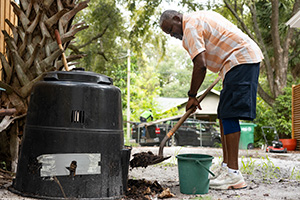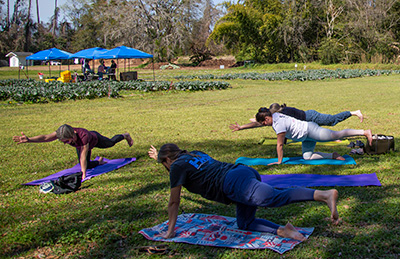Gardening to Heal

A Wellness Approach to Low Back Pain Management
The healing power of plants presents itself in more ways than one. While certain plants contain nutrients that can improve human health via medicines, herbal remedies, teas, and food, the act of caring for plants also contributes to physical and mental well-being. One research-backed method of healing through gardening is therapeutic horticulture.
Therapeutic Horticulture
Therapeutic horticulture engages people with plant and nature-based activities, guided by a professional in an individual or group setting. The aim is to explore gardening as a healing modality and work towards the psychological, physical, cognitive, social, spiritual, and vocational goals of the participants. Each session is modified to fit the needs of the participants, with activities catered to specific conditions or situations. Therapeutic horticulture is practiced in clinical and rehabilitative settings and can also be community focused.
Therapeutic horticulture can improve both brain and physical function, from memory and socialization to balance, muscle strength, and coordination1. It also provides benefits such as sensory stimulation, relaxation, stress reduction, increased confidence, and improved coping skills. By encouraging different postures and promoting movement, new research suggests the therapy can even help those with low back pain.
Pilot Study: Gardening for Low Back Pain Relief
In a recent pilot study by UF/IFAS and UF College of Medicine, researchers revealed that gardening through therapeutic horticulture provides benefits to people with lower back pain. This two-part study consisted of an experimental group of nine patients and a survey of 170 patients, all being treated for low back pain at the University of Florida’s Physical Medicine & Rehabilitation Clinic.
Of the surveyed individuals, most believed that therapeutic horticulture would improve their mood, build stronger muscles, lower stress, decrease pain, and make it easier to perform self-care tasks with less pain. There was considerable interest in the therapy, indicating that people are open to the idea of therapeutic horticulture for back pain.
Participants in the experimental group took part in a one-hour session of therapeutic horticulture at the Wilmot Botanical Gardens on the University of Florida’s main campus in Gainesville. The content was designed to improve spine mobility of people with low back pain by engaging participants with motions they don’t normally engage in. During the session participants made an herb planter, working both in a greenhouse and outdoor garden.
With therapeutic horticulture, gardening activities can be used to promote physical movement by participants. In the study, participants improved mobility and function by doing activities like gathering materials and lifting light loads. They worked on improving upper body movement by collecting plant cuttings and digging roots. Reaching and grasping while cleaning gardening tools and emptying compost buckets provided additional movement.
After the session, participants exhibited an increase in spine mobility and a decrease in anxiety. Participants reported feeling more relaxed after the activities and expressed interest in doing more therapeutic horticulture if given the chance, believing the therapy could help improve their back health. This study suggests that gardening can be a tool for improving quality of life for those with low back pain, providing an active nature-based option for treatment plans. Future studies will delve deeper into the effectiveness of therapeutic horticulture for chronic pain and assess long-term benefits to determine the sustainability of the therapy over time.
Read the full paper on the study at ResearchGate.
Back Pain Tips for Home Gardening

If you would like to lessen back pain and enhance overall well-being while gardening, you can try adding gentle stretching or yoga to decrease stress and improve your mobility. Using ergonomic gardening tools will lessen muscle strain. Light tasks such as weeding and watering provide beneficial physical activity. It is important to rest, so incorporating a comfortable seating area can allow your muscles to relax. Creating a calm setting by adding mindfulness elements can also improve mood and encourage relaxation.
Whether you participate in therapeutic horticulture or simply garden at home, putting your hands in the earth and working with plants can work wonders for your physical and mental health.
Also on Gardening Solutions
More from UF/IFAS
- About Therapeutic Horticulture at UF
- Costs and Benefits of Vegetable Gardening
- Diet and Brain Health
- Social and Community Benefits and Limitations of Urban Agriculture
1. Sharififar, Sharareh & Sein, Michael & Diehl, Elizabeth & Tham, Siang Yu & Nixon, Ryan & Sheppard, Carter & Bolling, Jamie & Majid, Mohammad & Apfelbaum, Cynthia & Vincent, Heather. (2024). Pilot Study on Therapeutic Horticulture for Chronic Low Back Pain: A Mixed Methods Study. Alternative therapies in health and medicine. 30.
